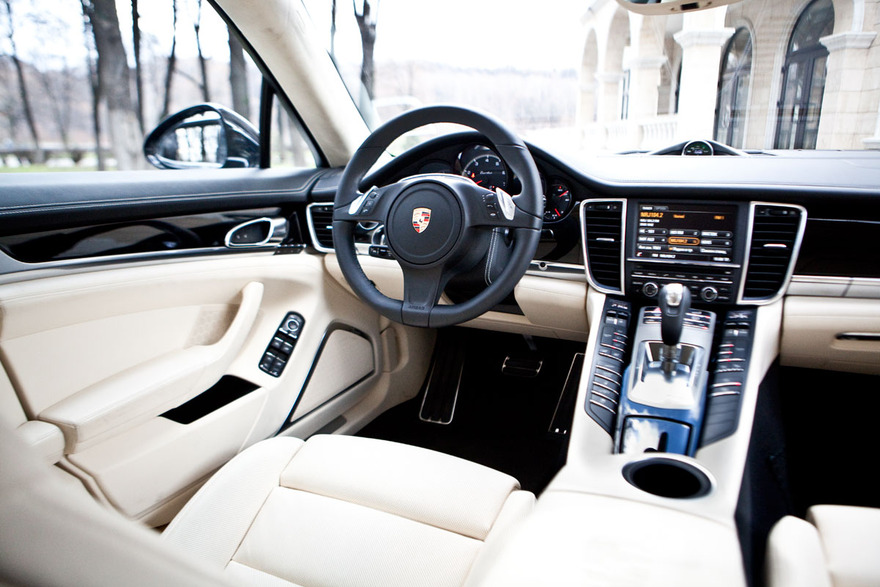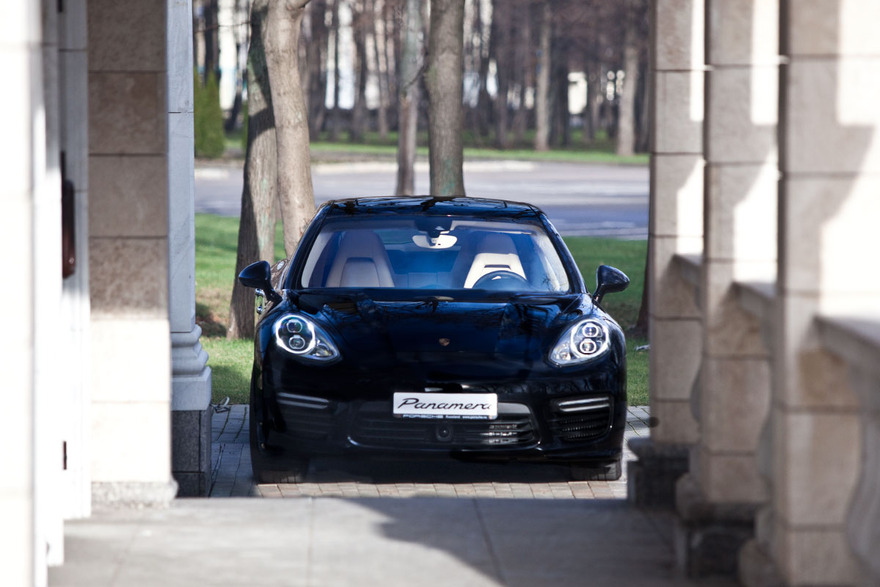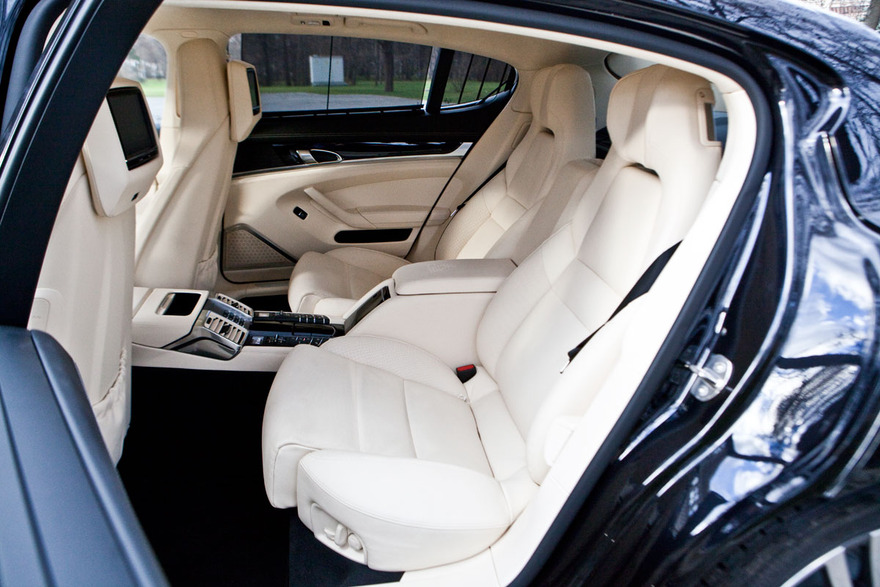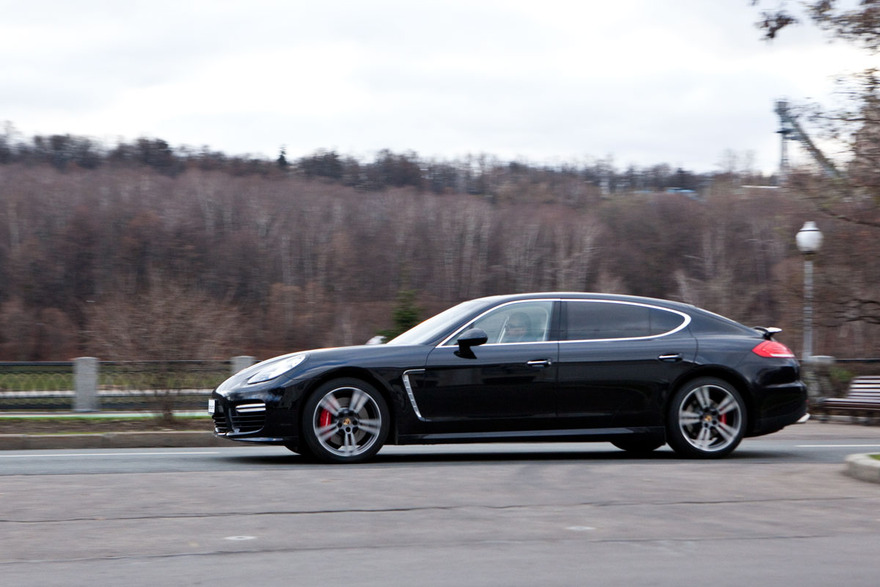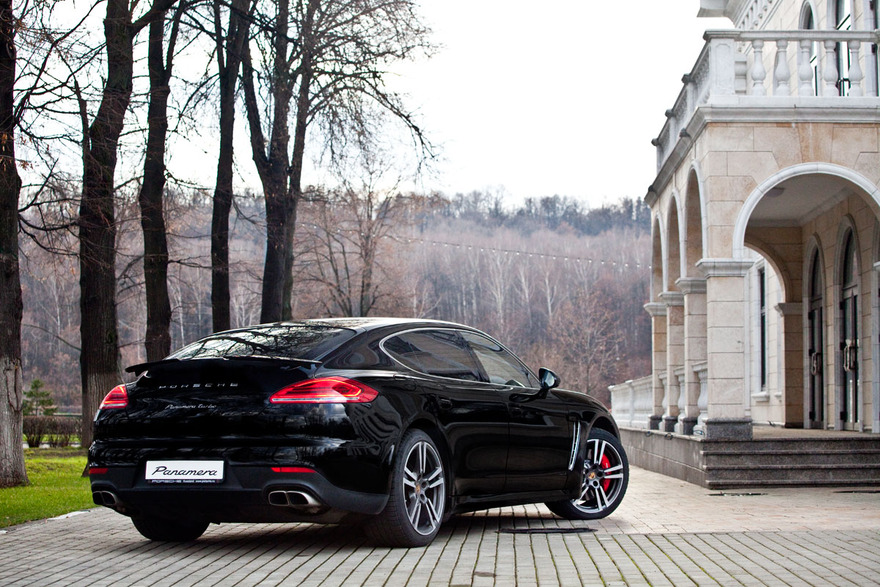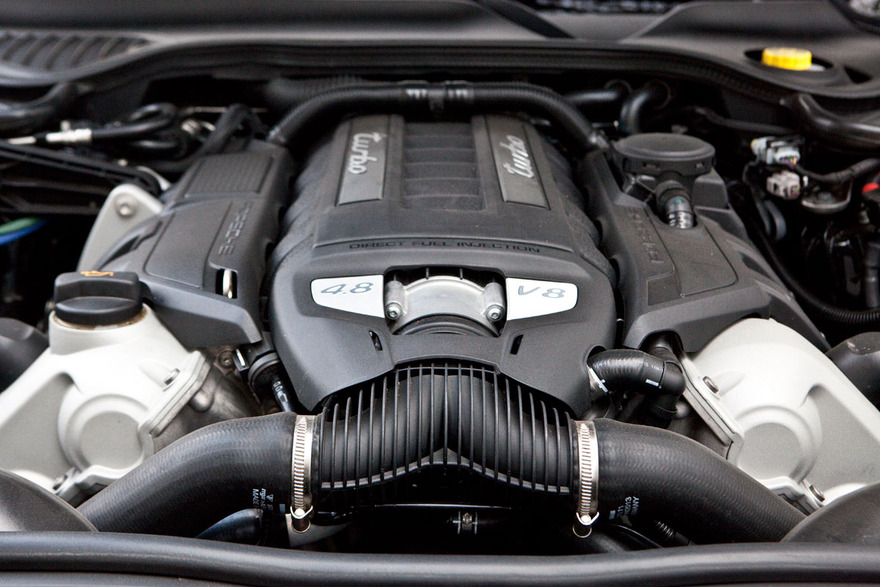... exclaimed one of my friends when he saw a Porsche Panamera desktop image. The surface of the central dashboard was actually designed in collaboration with the famous telephone manufacturer. But unlike Vertu, Porsche Panamera is much more functional.
Having a lot of emotions in the process of car operation is wonderful. But when you start creating headlines and even whole paragraphs of text in your mind during the test drive already, it means that the car had really hooked you up.
The title “Why did they saw a Vertu in half?” was not the only variant. The others were: “Size matters” after having a seat in the back; “15 centimetres is a lot” or “Try to shove your Panamera deeper” appeared after trying to park it on a working day during a lunch break on Malaya Bronnaya street in the centre of Moscow. And finally “520 hp IQ” title came into my mind after having a successful attempt.
But I need to tell you straight away that despite the jam in the city-centre and absence of parking spots Panamera Executive is still not annoying. It is so smart and controllable that difficult road conditions cause almost no trouble. Of course it’s a metaphor, but when you are behind its wheel the situation outside is under your full control thanks to exterior cameras and detectors, giving you a feeling that the car is transparent.
Slippers for the cockroaches
It’s like that joke about an ignorant man who was so much surprised by a mouse pad that suggested also getting slippers for the cockroaches. It might sound rude but it seems so realistic that it is difficult to find an alternative comparison.
This association came to our minds when we opened the luggage compartment and started exploring it. Boot lid latch is not just simply sunk and covered by a catch but this catch is equipped with a special brush which cleans the latch off dust and possible litter. In this way it prevents the dirt from getting into the lock cylinder.
Why do I give such a detailed description? That is because it gives a small but very bright and illustrative feature of the whole car. A lot of thought went into design not only of each detail, but also details of details and it is delightful.
Buttons, handles, seat configuration, shape of the steering wheel, dashboard — there is nothing to find fault with here even if you try. And this was not our intention, though we were examining everything quite critically. Window regulator button located on the rear doors regulates not only the height of the window but also the up and down movement of the roll-up sunblinds. Between the rear seats there is a beverage cooler (unfortunately, it was empty in our case) with a pleasant blue lighting.
Everything is stylish, “comme il faut” and even the endless row of buttons on the dashboard does not annoy you: you get used to it instantly and act on a hunch.
As Porsche is one of the absolute market leaders in the quality-to-reputation section and Panamera is one of the best (or maybe the best) top class sedan, we were really interested in testing the new Panamera Turbo generation and find out how it is different from its ancestors. And as a cherry on top it was the Executive version which is commonly called LONG.
Changes and updates in the renovated Panamera make a logic repetition of the other Porsche model upgrades. They include both visual changes (exterior and interior) and modifications of important parts and assemblage of the car.
Outfit
As clothes count for the first impression, we’ll start with them.
There are some body changes but they are rather insignificant. Air intakes had become a bit larger; lines going to headlights had changed; additional elements had been added to doorsills and mirrors. Rear window slope angle had changed a lot — due to more horizontal angle position it gives an impression of a lower and more elongated outline.
Turbo and GTS models became the queens even among the queens. Their lateral air intakes are now even larger, with turn signals implanted in them; and the flat predator-like face is crowned with the central air intake tapering smoothly downward.
Executive versions are distinguished by 15-centimetre longer wheelbase. It allowed increasing the space for the back passengers (+12 cm) and made it more comfortable for them to get into a car (door width is +12 cm). The car has separate rear seats and soft close doors. It also has heat- and noise-resistant glass, tinted rear windows equipped with additional roll-up sunblinds providing almost full privacy.
A few IQ details
I bet there are not so many experts who could find a 20 hp difference when driving a car producing more than 250–300 hp. That is why 20 horsepower increase — up to 250 hp now — seems more like a tribute to technological development and new engineering solutions than a real desire to increase the output. Nevertheless, this seemingly negligible increase became the reason of a few nice details: acceleration up to 100 km/h became 1/10 sec less and is now making 4.1 sec; and the top speed is now 2 km/h higher (up to 305 km/h). In addition to that, fuel consumption decreased up to 1.3 litres per 100 km. Sure enough not so many Panamera owners would pay attention to such trifle but as they say “every bit counts”.
Those who love the sound of the car were also pleased: the new version is fitted with three flaps in the silencer area which either close or open depending on engine load. The sound is fantastic!
Also a few dynamic questions were solved: shock-absorbers became softer; pneumatic elements were optimised in favour of comfort; front axle suspension mounting was enlarged. In addition to that, they updated steering column bearing and made the car more precise when cornering. It all made Panamera smoother and more comfortable without compromising its driving performance. The car is really focused, very precise and extremely fast.
From and with our hearts
Porsche Panamera belongs to such type of cars you cannot speak ill of even if you want to. Such task couldn’t even have been facing us. And moreover this brand inspires genuine respect for being well-thought-out and highly technological as well as for its past, present and future in sports.
At some point Porsche left the world of motor sport in order to design and launch the production of Panamera. Now they are coming back. But they use all technologies developed for motor racing in building their civil vehicles. And you can definitely feel it. In spite of its weight, size and top range equipment level any Porsche has always been and will always remain a sports car in the first place. And this is what makes us love and value them.
Panamera Turbo Executive 4.8-liter twin-turbo V8 engine producing 520 hp (382 kW);
PDK; PTM; 0 — 100 km/h in 4.2 seconds; top speed — 305 km/h;
fuel consumption — 10.3 litres/100km; CO2 emissions — 242 g/km

